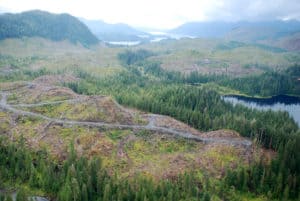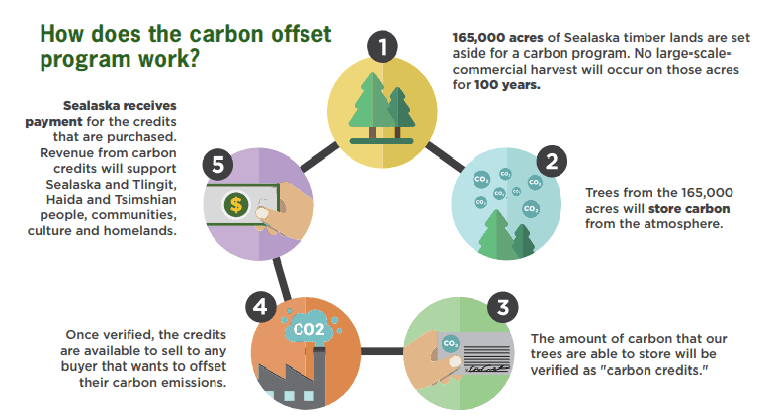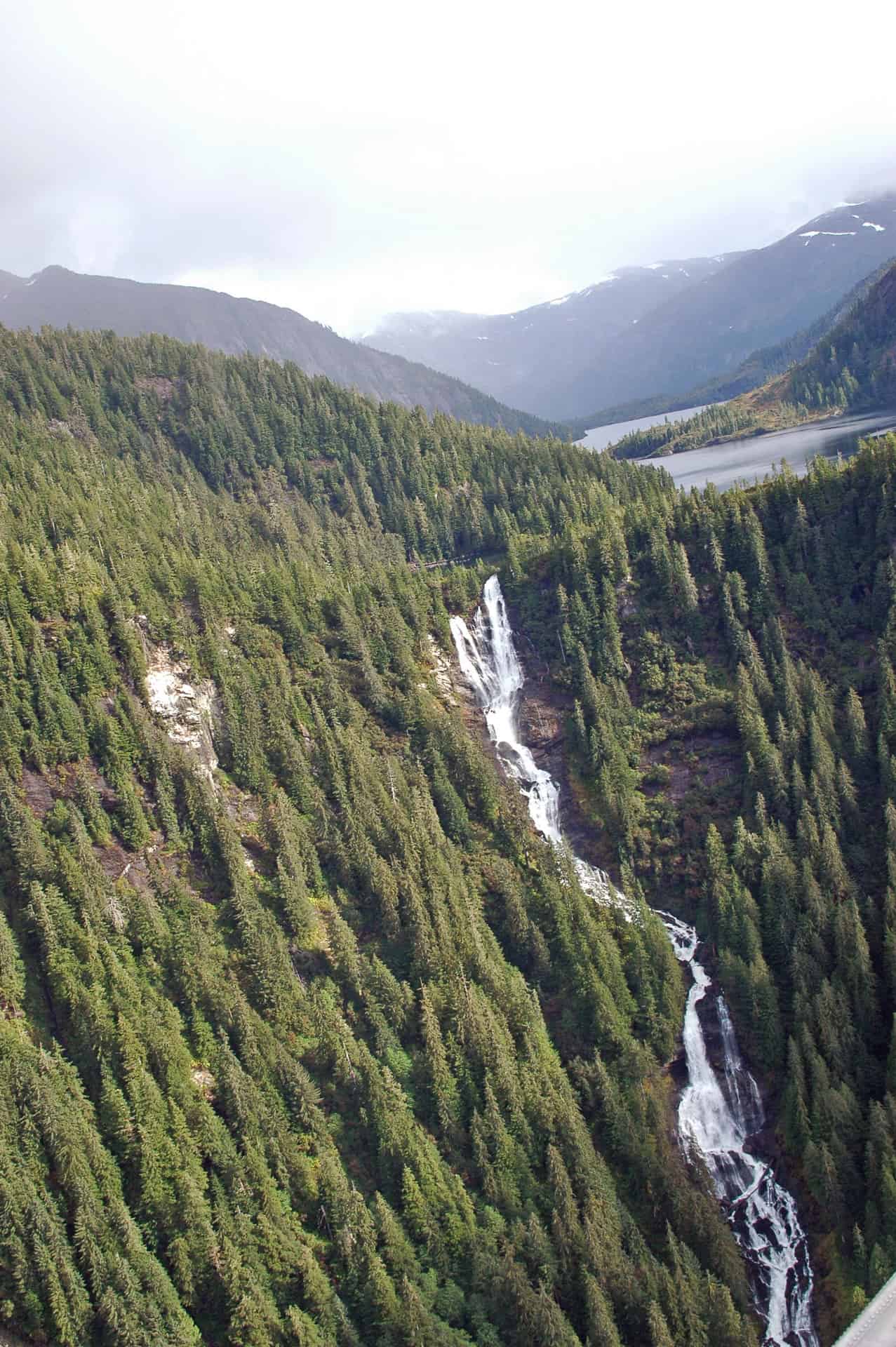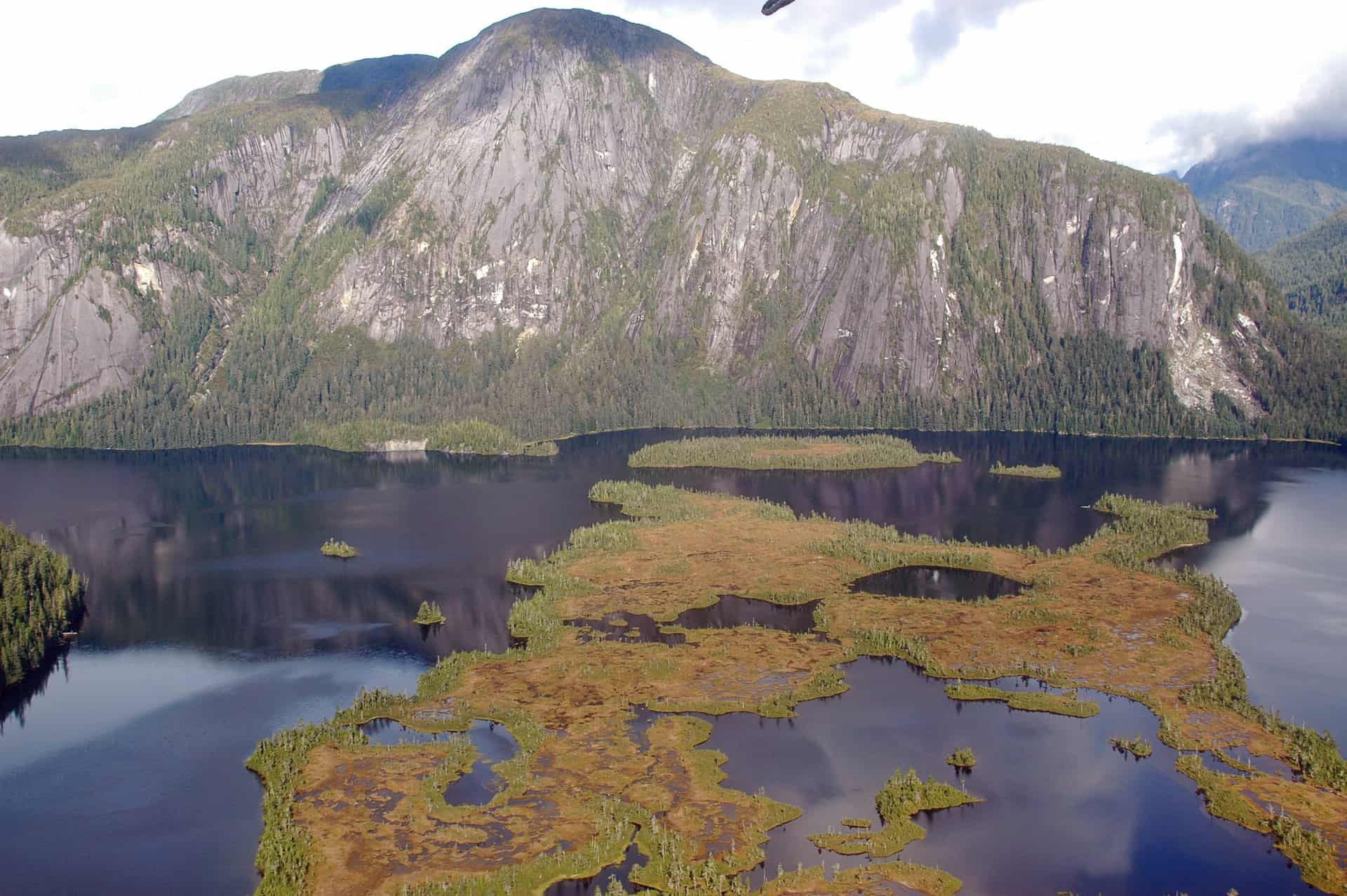(Clear-cutting in the Tongass Forest, Alaska | by musicwood)
Over the years, the Forest Service has dreamed of being able to do “big gulp” projects, or in contemporary terms, “landscape scale” projects. These essentially amount to doing one EIS for a large area and a long time period before the actual locations and treatments have been determined. There are many of these in progress now across the country, and the approach is being tested (again) in court in Alaska on the Tongass National Forest. This Earthjustice news release includes a link to the complaint (filed May 7), which includes the following:
The Prince of Wales Landscape Level Analysis Project (the Project) in the Tongass National Forest includes extensive old-growth and second-growth logging. The project area is roughly 2.3 million acres. The project area contains about 1.8 million acres of national forest land. The Project authorizes logging of up to 656 million board feet (mmbf) of timber. The U.S. Forest Service (Forest Service) estimates that this logging would occur on over 42,000 acres. The Forest Service estimates about 164 miles of roads associated with the logging would be constructed as part of the Project. The Record of Decision authorizes implementation of the Project to take place over a span of fifteen years.
The Forest Service has authorized this Project using an approach that has been soundly rejected by the courts. The agency authorized the Project before identifying specific locations for logging or road construction. As a result, the FEIS does not adequately describe the direct, indirect, or cumulative impacts of the Project on the human environment or on subsistence uses.
In the 1980’s, the Forest Service lost at least two court decisions for failure to provide adequate site-specific information and analysis in the environmental impact statements (EISs) for Tongass timber sales. City of Tenakee Springs v. Block, 778 F.2d 1402 (9th Cir. 1985); City of Tenakee Springs v. Courtright, No. J86-024-CIV, 1987 WL 90272 (D. Alaska June 26, 1987). In subsequent Tongass timber sale EISs, the Forest Service began including comprehensive, detailed quantitative and qualitative descriptions of the logging and road access plans for each harvest unit proposed for sale. When it did so, the courts upheld the adequacy of the site-specific information. Stein v. Barton, 740 F. Supp. 743, 748-49 (D. Alaska 1990).
The FEIS’s Response to Comments states that “it is not possible to determine all of the direct, indirect, or cumulative impacts to wildlife habitat or connectivity that could result from this project before implementation.” Implementation of a particular part of the project has begun, apparently with no project-specific NEPA planned to determine those effects. Plaintiffs necessarily are challenging the entire project decision for violation of NEPA (and ANILCA) procedures.
There is a related NFMA issue that results from the Tongass forest plan imposing data requirements on projects that are hard to meet at this large scale, making the project inconsistent with the forest plan. While this involves specific language in the Tongass plan, all forest plans explicitly or implicitly require certain analysis prior to projects. The bigger the area, the harder that is to do. And the trend of recent plan revision documents is to put off decisions about things like ecological integrity until project planning. If successful, this could create an imposing analytical burden for large-scale projects like this one.
They are still going to have to do a site-specific NEPA analysis somewhere. The end result of all this may be that the Forest Service will create another level of planning and NEPA for “timber programs.” Just like the old days, except now added to the existing current plan and project level processes.





